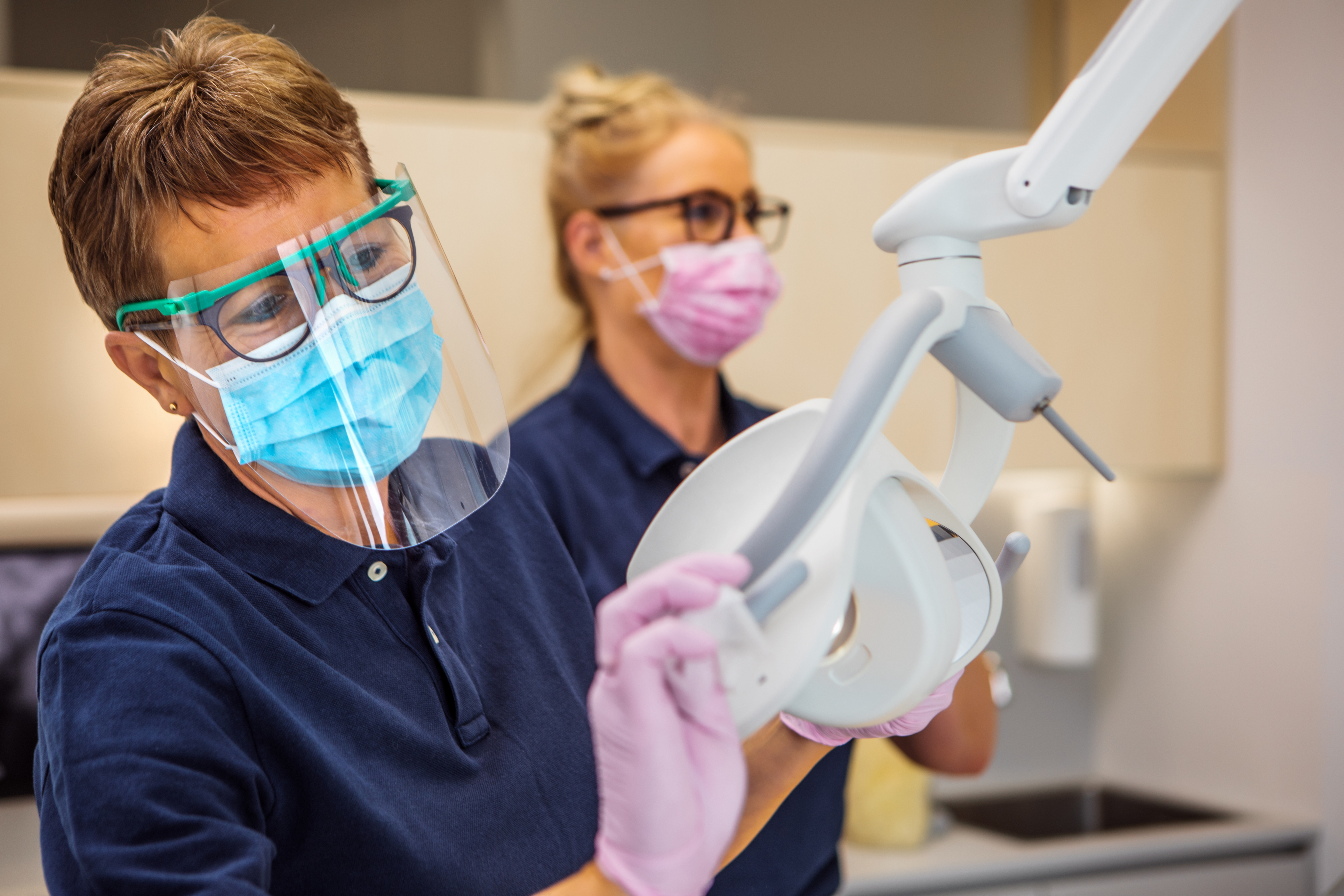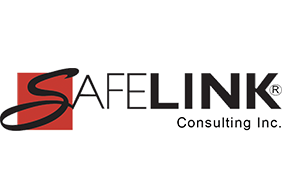As the pandemic continues and the authorities learn more about COVID-19, the recommendations are changing. The following will provide information that has been issued by the Centers for Disease Control (CDC) and the Occupational Safety and Health Administration (OSHA).
The most recent change issued by the CDC updated the Guidance for Dental Settings and was issued on August 4, 2020. The key points are:
- Dental settings have unique characteristics that warrant specific infection control considerations.
- The most critical dental services must be prioritized.
- Care must be provided that minimizes harm to patients from delaying care.
- Personnel and patients must be protected from potential exposure to SARS-Cov-2 infection.
- Communicate to both personnel and patients the need for them to stay at home if sick.
- Have steps in place for handling of a patient who enters your facility and has COVID-19 symptoms.
Here’s a summary of the changes:
Guidance has been rearranged for clarity.
The definition of fever is either measured at 100.0 degrees F or subjective fever to align with the CDC’s Interim Infection Prevention and Control Recommendations for Patients with Suspected or Confirmed Coronavirus Disease 2019 (COVID-19) in Healthcare Settings.
PPE to be worn during patient encounters with patients NOT suspected of SARS-CoV-2 infection but in areas with moderate to substantial community transmission is:
Wear eye protection in addition to a facemask to ensure the eyes, nose, and mouth are all protected from exposure to respiratory secretions during patient care encounters, including those where splashes and sprays are NOT anticipated.
Use an N95 respirator or equivalent respirator or higher level of protection during aerosol generating procedures.
Protective eyewear such as safety glasses or trauma glasses with gaps between glasses and the face are not as likely to protect the eyes from all splashes and sprays. An example of not being adequate protection according to this guideline would be the use of removable side shields on prescription eyewear or just the use of regular safety eyewear. A face shield that fits to the forehead and covers the face below the chin and close to the sides of the face would provide better protection.
This update points out that due to the use of rotary dental and surgical instruments such as handpieces or ultrasonic scalers and air-water syringes, the practice of dentistry is at risk. The CDC points out that surgical masks protect mucous membranes of the mouth and nose from droplet spatter, but they do not provide complete protection against inhalation of infectious agents.
Patient screening is critical for deciding whether the patient should be treated. CDC recommends that dental treatment only be provided after the patient has been assessed in order to eliminate the risk to the dentist and staff. Having a policy to contact patients by telephone prior to treatment to ask the questions about symptoms, exposure to individuals with COVID-19, travel, and other at-risk behavior can provide the opportunity to re-schedule the patient if the assessment indicates they are at-risk.
When the patient is to be treated and arrives at the practice, then take additional steps to protect everyone at the practice. This includes:
Posting visual alerts such as signs or posters at the entrance and other strategic places providing instructions about hand hygiene, respiratory hygiene, and cough etiquette. The CDC has posters available on their website.
Provide supplies at entrances, waiting areas, and patient check-in areas such as alcohol-based hand rub with at least 60% alcohol, tissues, and no-touch receptacles for disposal.
Use physical barriers at reception areas to limit close contact between patients, visitors, and front office staff.
Remove toys, magazines, and other frequently touched objects from waiting room if they can’t be cleaned and disinfected.
Due to shortages of PPE, employers must ensure that the appropriate amount and type of PPE and supplies are available to protect both the employees and the patients.
At this point, most employers have experienced the need to send employees home when sick, require quarantining, and deal with coworkers’ concerns regarding possible exposure at work. Employers must monitor and manage their infection control program. This is not only recommended by CDC but is required by OSHA. An employer must do what is needed to protect their employees while they are at work from hazards and this virus is no different. Fear of the unknown can be worrying to employees so it’s best to publish written policies that address sick leave, time off to stay home with sick family members, stay-at-home requirements, return-to-work policies, and actions that will be taken if an employee has been exposed to COVID-19 or is confirmed with COVID-19. Employers must be prepared for these occurrences and know what to do to protect themselves, their employees, and their patients.
CDC guidance - Employers and their OSHA Coordinators should review this information again to ensure that these guidelines are being considered in the determination of protective measures for employees, patients, and visitors to your facility.
OSHA has also issued Guidance for Preparing Workplaces for COVID-19. This guidance includes development of an Infectious Disease Preparedness and Response Plan. This Plan should address the levels of risk associated with various worksites and job tasks workers perform at those sites. OSHA also states to develop policies and procedures to promptly identify and isolate sick people and encourage sick employees to stay at home. Employers must use engineering and administrative controls to protect employees. These measures should be in writing and employees must be instructed on how to use them for their protection. Monitoring by the employer is critical to ensure that employees are following the policies and procedures.
Another OSHA issue is whether employers are required to record COVID-19 illnesses. Some industries and employers are partially exempt from OSHA’s recordkeeping for injuries and illnesses. The forms are known as Forms 300, 300A, and 301. Unless a state-specific OSHA plan states differently, employers with 10 or fewer employees are partially exempt from recordkeeping. There are also industries that are exempt and dental offices are one of those industries, however, dental laboratories are not exempt. Again, if there is a state-specific OSHA plan it may not recognize this exemption. Employers with more than 10 employees in a calendar year who are required to record work-related injuries and illnesses would be required to record a COVID-19 illness if it is work-related. This means that employers must take action to determine whether employee COVID-19 illnesses are work-related and thus recordable. OSHA recognizes in its May 19, 2020 guidance to their Compliance Safety and Health Officers (CSHOs) that “given the nature of the diseases and ubiquity of community spread, however, in many instances it remains difficult to determine whether a COVID-19 illness is work-related, especially when an employee has experienced potential exposure both in and out of the workplace.” This guidance to their CSHOs goes on to inform the CSHOs that OSHA is exercising its enforcement discretion in order to provide certainty to employers and workers. Until further notice, OSHA states that it will enforce the recordkeeping requirements of 29 CFR 1904 for employee COVID-19 illnesses for all employers according to these guidelines:
Recording a COVID-19 illness does not, of itself, mean that the employer has violated any OSHA standard.
Employers with 10 or fewer employees and certain employers in low hazard industries have no recording obligations, however, they need to report work-related COVID-19 illnesses to OSHA if they result in a fatality or an employee’s inpatient hospitalization, amputation, or loss of an eye.
The following is a summary of the guidance provided by OSHA to the CSHOs to determine if the employer has taken adequate steps to determine if the exposure is work-related:
The reasonableness of the employer’s investigation: This would not include medical inquiries due to privacy concerns. Employer should ask the employee: (1) how he/she believes it was contracted; (2) were there any work and out-of-work activities that may have led to the COVID-19 illness; and (3) review of the employee’s work environment for potential exposure.
The evidence available to the employer: Evidence is based on the information reasonably available to the employer at the time employer made its work-relatedness determination. Information learned by employer later must be taken into account.
The evidence that a COVID-19 illness was contracted at work can include the following unless there is an alternative explanation:
Several cases developed among workers who work closely together.
Employee contracts shortly after lengthy, close exposure to a coworker or customer who has confirmed COVID-19.
Job duties include frequent, close exposure to general public in a locality with ongoing community transmission.
An employee’s COVID-19 illness is likely NOT work-related if:
He/she is only worker to contract COVID-19 in her/his vicinity and job duties do not include having frequent contact with the general public.
He/she outside the workplace closely and frequently associates with someone (e.g., a family member, significant other, or close friend) who has COVID-19, is not a coworker, and exposes the employee during the period in which the individual is likely infectious.
CSHOs are instructed to give due weight to any evidence or causation, pertaining to the employee illness, at issue provided by medical providers, public health authorities, or the employee himself or herself.
If it is determined by the employer that the COVID-19 illness is work-related, then it must be recorded on the Form 300 as a respiratory illness. If an employee voluntarily requests that his or her name not be entered on the log, the employer must comply as specific under 29 CFR 1904.29(b)(7)(vi).
Having an expert assist you in developing a COVID-19 Safety Management Program is the best way to meet today's challenges. Need help with your infectious disease preparedness plan? The good news is SafeLink Consulting has simplified this process for you! We are ready to help you get this done quickly and economically. Contact us today for assistance. Complete the info request form or call 800.330.6003 or 470.533.2581. or set up a meeting with Sandy to learn more.
How to achieve Dental OSHA Compliance for our practice
How to achieve OSHA Compliance for your dental laboratory
Why choose this program?
You'll get written documentation to meet OSHA’s guidance in protection of your workers & their families, patients & visitors from infectious diseases including COVID-19.
You'll gain up to one hour of virtual consulting with an expert familiar with dentistry to help guide your dental practice or dental lab on how to incorporate this planning into your health and safety program. Documents are delivered in a downloadable format.
You'll receive these policies: Infectious Disease Preparedness & Response Plan—Return to Work Policy, Screening Policy for Employees, PPE Policy, Employer Policy & FAQs for COVID-19 Exposure Situations, Respiratory Protection Program, plus forms.
Protecting Patients & Staff When Resuming Your Dental Practice
Best Safety Practices When Resuming Your Dental Laboratory Operations
Learn more about what SafeLink Consulting can do to help your business with compliance services, including safety compliance, to meet OSHA training requirements and quality system consulting to meet FDA compliance. SafeLink Consulting assists businesses with workplace safety training, infection control training, HIPAA training online, quality systems, assessments, audits, due diligence, and more.
Industries include:
Dentistry compliance - assisting the dental practice with meeting requirements for OSHA, HIPAA, EPA, and CDC guidelines, patient safety and employee health & safety
Dental Laboratory compliance - assisting the dental lab with meeting requirements for OSHA, FDA, and CDC guidelines, employee health & safety, plus FDA requirements for lab manufacturing custom implant abutment /gmp for medical device manufacturers
Medical Device Manufacturers compliance - assisting with meeting OSHA compliance & FDA requirements, GMP - good manufacturing practices
General Industry compliance - assisting with OSHA compliance and FDA compliance as it pertains to the specific business
Beverage Industry compliance - assisting beverage businesses such as the craft brewery, winery, cidery, distillery, vintner with meeting OSHA compliance, health & safety, FDA requirements / GMP - Good Manufacturing Practices.
Get notification when new regulatory compliance training courses are added plus upcoming events by subscribing to our email news.









Leave Comment